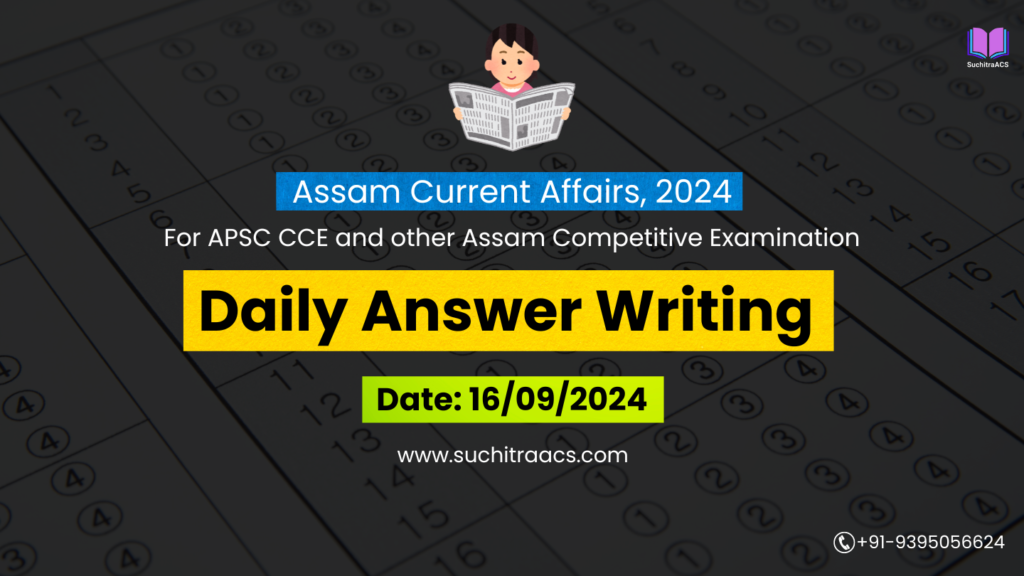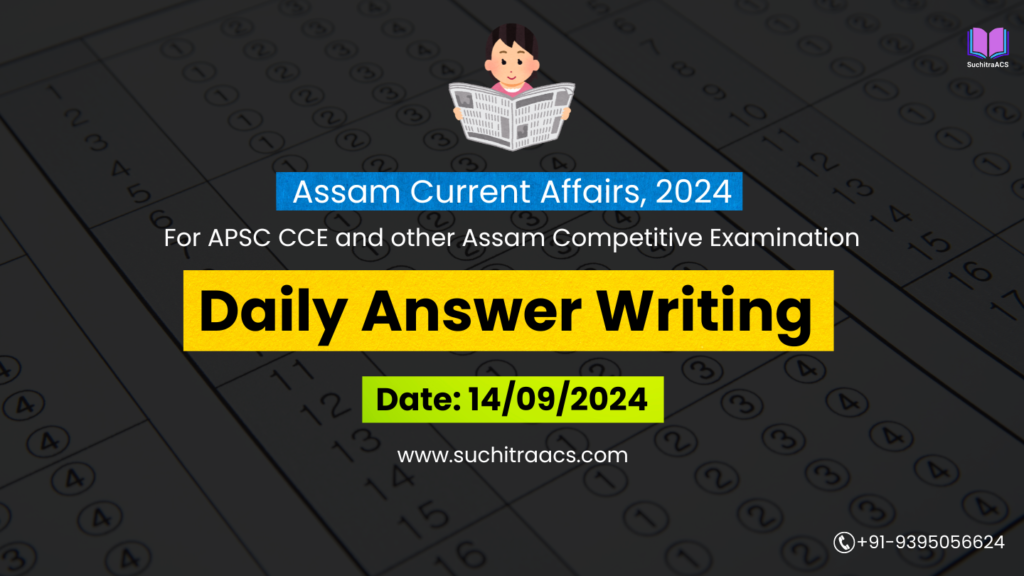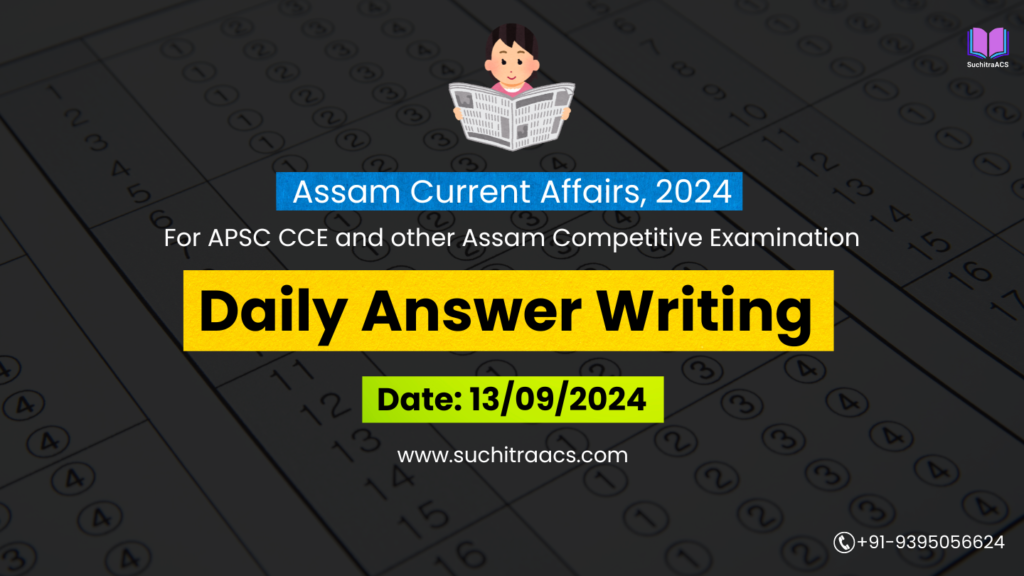APSC Answer Writing (Daily) based on Assam Tribune – 05/09/2025
For APSC CCE and other Assam Competitive examinations aspirants, practicing Daily Answer Writing is vital. This blog covers the most important Main question and its model Answer from the Assam Tribune today (05-09-2025).
📝 Question
“Climate change has intensified extreme rainfall events in the Northeast, particularly Assam, aggravating flood and erosion vulnerabilities. Discuss the implications and suggest measures for climate-resilient development.” (10/15 marks, 150–250 words)
✍️ Model Answer
🔹 Introduction
The Northeast region, particularly Assam, is among the most climate-vulnerable zones in India. The India Meteorological Department (IMD, 2025) has highlighted a rising trend of short-duration, high-intensity rainfall events, causing recurrent floods, erosion, and landslides. These changes, linked to global warming and monsoon variability, have deep socio-economic and ecological implications.
🔹 Body
1. Implications of Extreme Rainfall in Assam & NE
- Floods & Erosion: Nearly 40% of Assam’s land is flood-prone; erosion of Brahmaputra banks displaces lakhs annually.
- Agricultural Loss: Damage to crops and soil fertility, impacting food security and rural livelihoods.
- Urban Flooding: Encroachment on wetlands in Guwahati and Imphal worsens stormwater flooding.
- Biodiversity Threats: Kaziranga rhino habitats submerged; wetland ecosystems degraded.
- Humanitarian Impact: Displacement, health risks (water-borne diseases), and economic disruption.
2. Challenges in Addressing the Issue
- Weak embankment infrastructure and poor maintenance.
- Unplanned urban growth reducing natural drainage.
- Limited climate modelling capacity for local forecasting.
- Inadequate coordination in transboundary river basin management (India-Bhutan-Bangladesh).
3. Way Forward for Climate-Resilient Development
- Nature-Based Solutions: Restore wetlands (Deepor Beel, Silsako) as natural flood buffers.
- Infrastructure Upgrades: Climate-resilient embankments, sponge city planning for Guwahati.
- Early Warning Systems: Expand Doppler radar coverage; community-level alerts.
- Resilient Agriculture: Promote flood-tolerant paddy varieties, agro-diversification.
- River Basin Cooperation: Strengthen Brahmaputra Board and cross-border flood forecasting with Bangladesh & Bhutan.
- Policy Integration: Embed climate adaptation in Assam’s SAPCC and urban master plans.
🔹 Conclusion
Extreme rainfall in the Northeast is no longer an episodic hazard but a structural climate challenge. For Assam, where floods and erosion are annual realities, the path forward lies in climate-resilient infrastructure, ecosystem restoration, and community-driven adaptation. A balanced approach of technology + traditional wisdom + regional cooperation can transform the region from a disaster hotspot into a model of adaptive governance.
✨ Looking for top-quality APSC Mains Guidance with Personalised Mentor?

🔔 Join Our WhatsApp Study Group!
For exclusive access to premium quality content, including study materials, current affairs, MCQs, and model answers for APSC CCE and other Assam competitive exams.
Click here to join: SuchitraACS Study WhatsApp Group
📚 Want to know more about SuchitraACS’s most affordable courses?
Click here to know more: SuchitraACS Courses for APSC CCE and Assam Competitive Examinations




